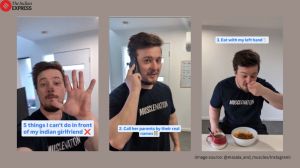Myriad uses of digital image tech comes up at meet
A Five-day seminar on digital image processing technology was organised by Army Institute of Technology on Monday.
A Five-day seminar on digital image processing technology was organised by Army Institute of Technology (AIT) on Monday. Experts from several fields gathered to throw light on various applications of technology.
The highlight of the inaugural session was the key note address by Prof AS Abhyankar,dean,Research and Development,and professor,Computer Engineering Department,BRACTs Vishwakarma Institute of Information Technology (VIIT). In his address,Prof AS Abhyankar said that several lives and crores of rupees can be saved as the technology can help cut down the cost and time of drug discovery by almost half.
In general,drug discovery process lasts 12 years. First three years require bed synthesis. It is a chemical process used to synthesise enzymes. After three to four years,pre-clinical trials begin. After another three to four years,the clinical trials begin,in which the drug is tested on humans.
This lasts for two to three years. Another two years is required to get clearance from Food and Drug Administration, Abhyankar said.
The main focus is on the crucial six years of drug research during pre-clinical and clinical trials. During these trials,testing is done using In Vetro and In Vivo techniques. There are two technologies for doing cellular analysis during In Vivo process ¿ traditionally High Throughput Screening (HTS) is used. Now new system called High Content Screening (HCS) is being used.
HTS is a manual process in which hundreds of slides are observed by keeping them individually beneath the microscope. Not only is the process lengthy,the results derived are also vague. This affects the accuracy in diagnosis, he added.
In HCS,50,000 high resolution digital images of cell structures can be churned out in eight hours. However,it is not practical to analyse all those images manually. We have to go for automated ways. So,image processing algorithms with back-end of artificial intelligence,can cut down the pre-clinical and clinical trial period from six years to two years, said Abhyankar.
Later,director of one of the DRDO labs in city,R&DE (E),B Rajagopalan said his laboratory was reaching out to city-based technical colleges and encouraging faculty to come up with workable project ideas that would be useful for the armed forces. DRDO has been giving lot of projects to universities and other educational institutes involved in advanced technical research. DRDO has the extramural research cell that interacts with local technical colleges to encourage flow of ideas, Rajagopalan said. Rajagopalan also added the laboratorys prestigious Remotely Operated Vehicle (ROV) called Daksh has got acceptance from the Indian Army and it has placed 20 such limited series ROVs. Paramilitary forces and the police are also showing keen interest in the ROV,he said.







